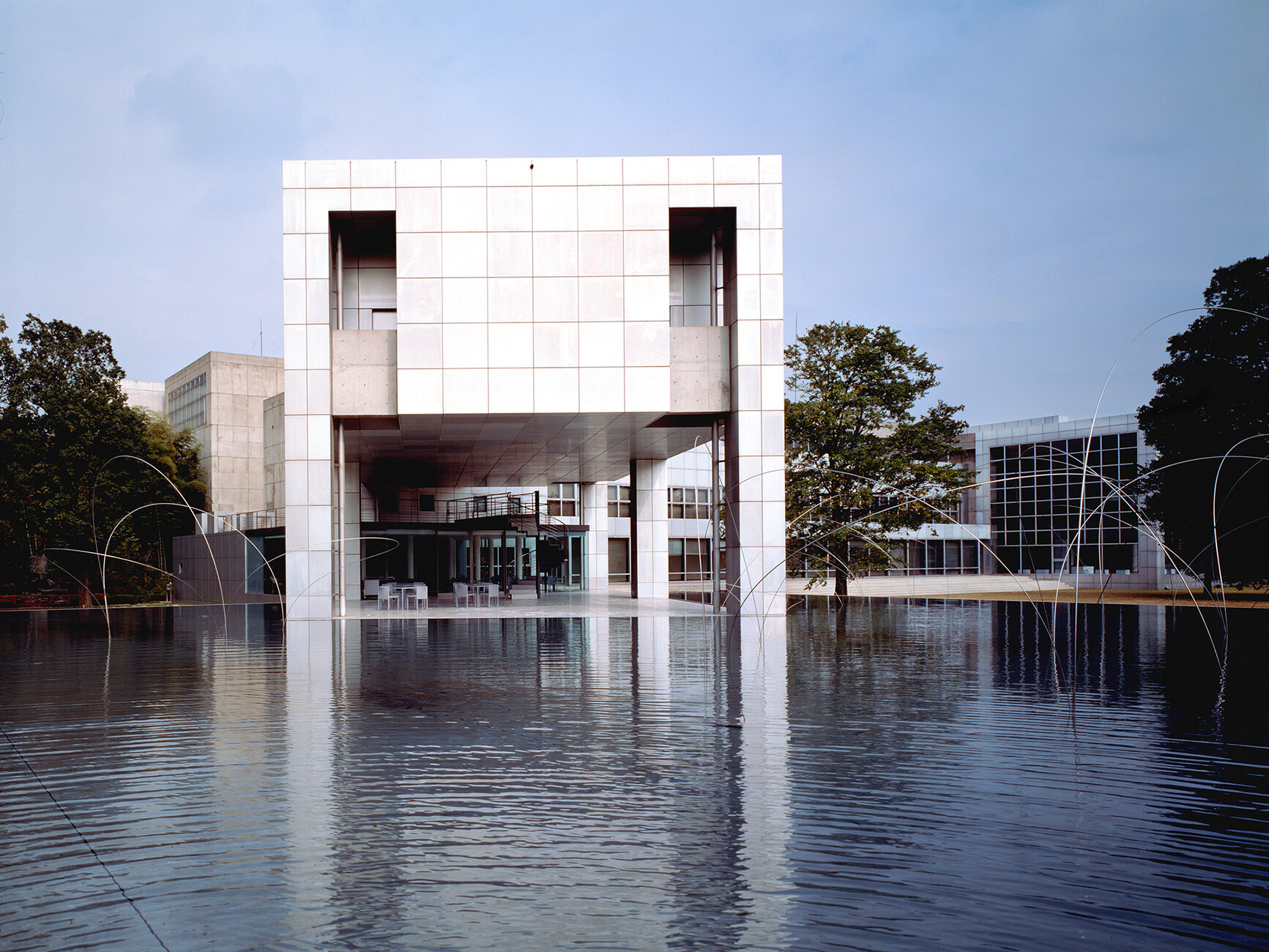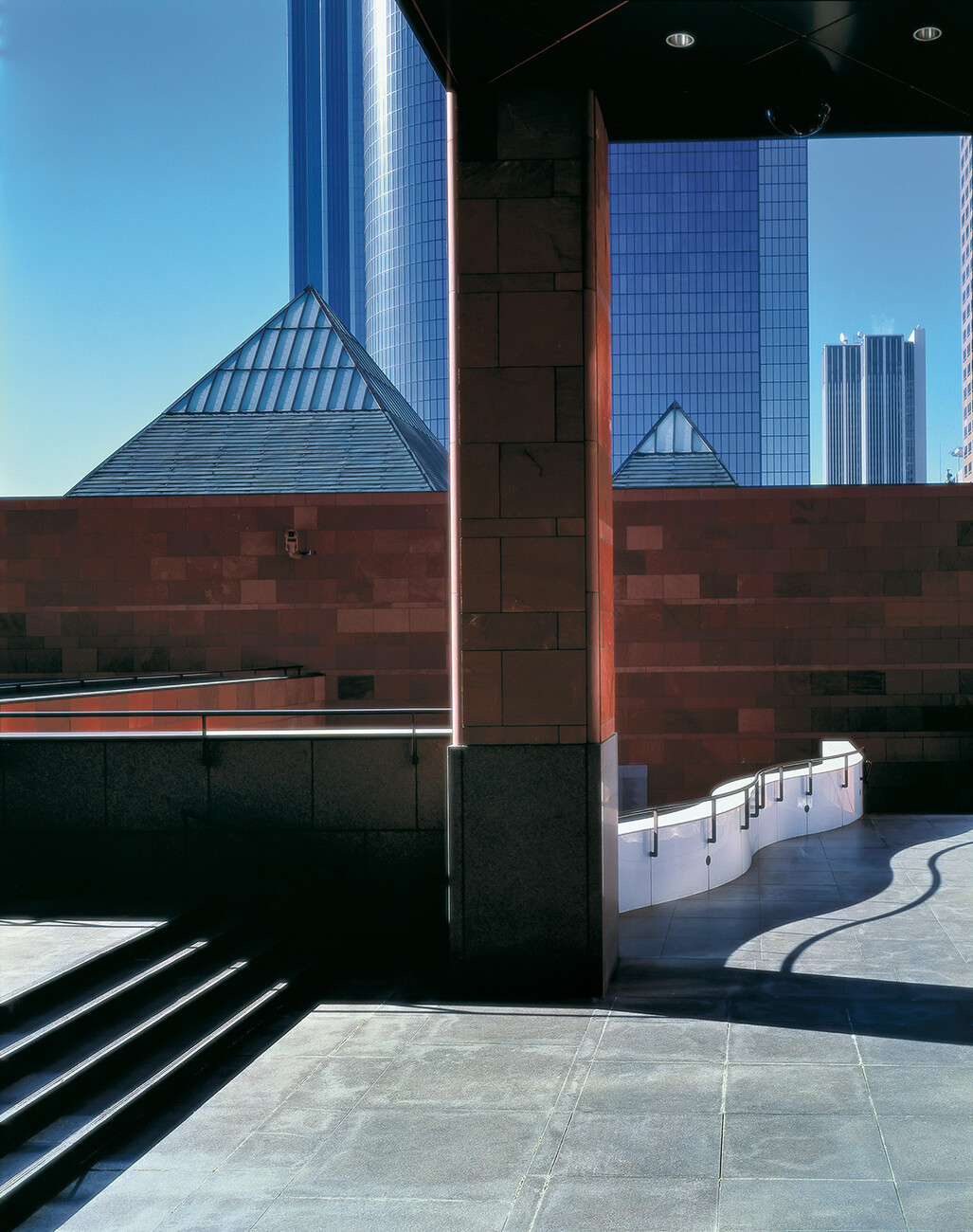Back to the future
“I see a modern city as being filled with invisible things,” writes Arata Isozaki. “It is like the labyrinth in Alice Through the Looking Glass, where it is impossible to grasp things flying towards you.” These sentences, which sound so topical, are taken from the essay “The Invisible City,” composed by the unconventional thinker as early as 1967. Half a century has passed since then. Yet as we read the Japanese architect’s major theories today they appear absolutely up to date. And when Arata Isozaki asks: “Could we not turn the past, as we imagine it in the future, into the future?” then as of yesterday, the 87-year-old has found his answer: Yes. Because in May 2019, Isozaki will be awarded a pretty big prize, namely still the most important honor to be bestowed upon an architect per se. Arata Isozaki is the 46th Pritzker Prize winner.
Of course no one expected this. Which is why, like every year, people are asking themselves “Why him?!?” While in fact the question really is: Why only now? Seeing as younger Japanese colleagues, such as Tadao Ando, Toyo Ito, SANAA and Shigeru Ban, all of them architects who were significantly influenced by Arata Isozaki, have long since been awarded the Pritzker Prize. And Zaha Hadid too belongs to this list of names. At least until her Japanese patron criticized her stadium design for the Olympic Games in Tokyo with a turtle metaphor in 2014 (“a turtle waiting for Japan to sink so that it can swim away”). With these few words, Isozaki triumphed as an architecture critic, while Hadid lost a major contract. In the future, all this will be in the past.
But let’s go back a few more decades. When Kenzo Tange formulated his theories on Structuralism in the mid-1960s, his team included the then 30-year-old Arata Isozaki, who contributed to these ideas and expanded on them. Space and form should be open to change, so they may adapt. And that is something we also want today: another one of those leaps in time. With his Structuralism, Tange referenced the ideas of Claude Lévi-Strauss as well as Peter and Alison Smithson, who had already translated these into buildings in the 1950s.
Isozaki learnt a lot from his teacher Tange – among other things, he worked on the latter’s radical and legendary plan for Tokyo. In 1963 he founded his own studio, Arata Isozaki & Associates, and developed concepts such as “City in the Air,” “Computer-aided City,” and “Fictional City.” He himself calls his “Mirage City” a Fata Morgana. In his exhibition project “Unbuilt,” showcased in Shanghai in 2004, decades later Arata Isozaki addressed all of his visions, utopias and non-spaces. The city of the future was lying in ruins, he exclaimed at the time: “Incubation process. Ruins lie in the future of our city, the city of the future lies in ruins.”
Isozaki’s global career began in his home country, where he created large structures, including many public buildings: museums, libraries and the festival plaza for the Expo 1970 in Osaka. Despite tirelessly traveling the world even in the years following the Second World War, he didn’t achieve his international breakthrough until the mid-1980s with the MOCA Museum of Contemporary Art in Los Angeles. At the time of MOCA’s inauguration, Isozaki was, after all, already 55 years old. Today, we encounter the built thoughts of Arata Isozaki across the globe: in Barcelona, Berlin, Doha, Florida, Milan, Shanghai. And he is still building: for example with Anish Kapoor, with whom in 2011 he developed the inflatable concert hall “Ark Nova” on the east coast of Japan in memory of the tsunami victims. In 2013 the giant violet donut made its way to Lucerne; in 2017 it returned to Tokyo.
“Uncompromising, brazen and traumatic as a designer, he always sought scandal,” Jörg R. Noenning states in his essay “Die Wissenskunst des Arata Isozaki” (Arata Isozaki’s Art of Knowledge). In order to raise questions that transcend time and boundaries, Isozaki goes beyond the scope of architecture, as the Pritzker Prize jury noted explaining its choice: “Arata Isozaki embraces the avant-garde.”
Structuralism, metabolism or Postmodernism: the new Pritzker Prize winner is hard to pigeonhole. “His search for a meaningful architecture is reflected in his buildings, which to date resist all stylistic categorizations and permanently continue to develop further,” the Pritzker Prize jury summarizes. Incidentally, in “Rumor City” Arata Isozaki labeled Postmodernism a “nasty guy I picked a fight with”: “I have constructed a mechanism that puts shackles on him the moment he awakes.” Maybe at some point Isozaki himself got somewhat lost in all of his thoughts and theories on our present day? After all, isn’t architectural history full of invisible things? An instrument like the Pritzker Prize is able to render some of them visible once more. The Nobel Prize of architecture is not based on a democratic vote, and neither is it oriented by background or age, and no longer by gender, either. It does not adhere to a chronology, theory or opinion, but intends to honor and communicate architecture. Arata Isozaki will be awarded the prize in Versailles – not in the castle itself, but in the small palace in front, where Tadao Ando was presented his medal before him in 1995. The future will show which effect this historical place will have on Isozaki’s time-space fabric. A future that may already be the past in an imaginary world.

















